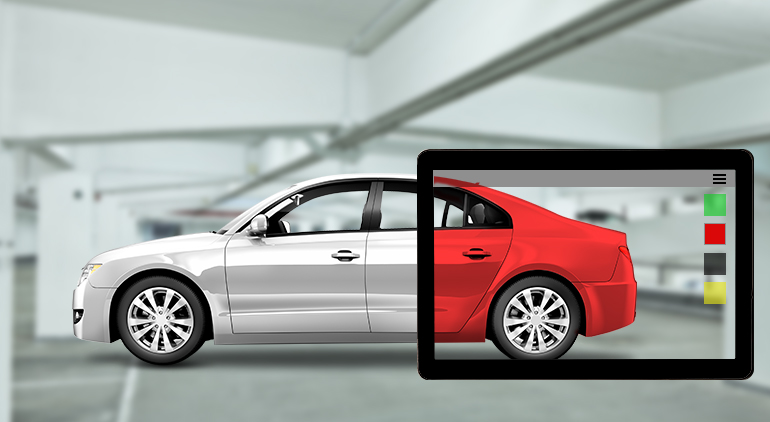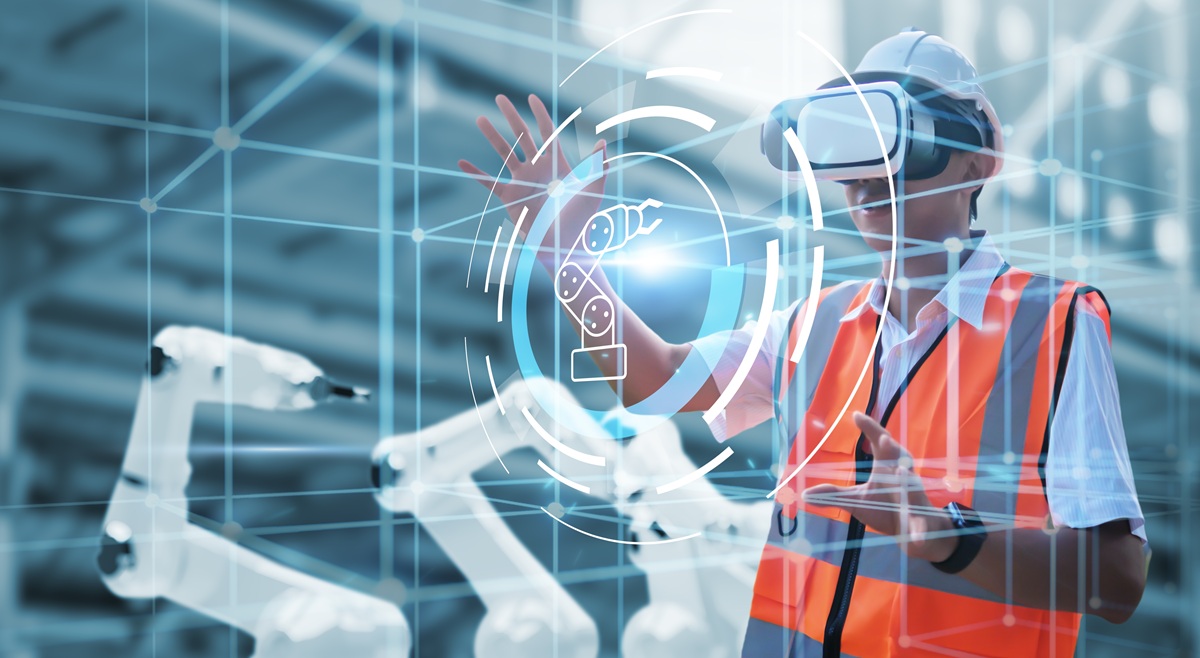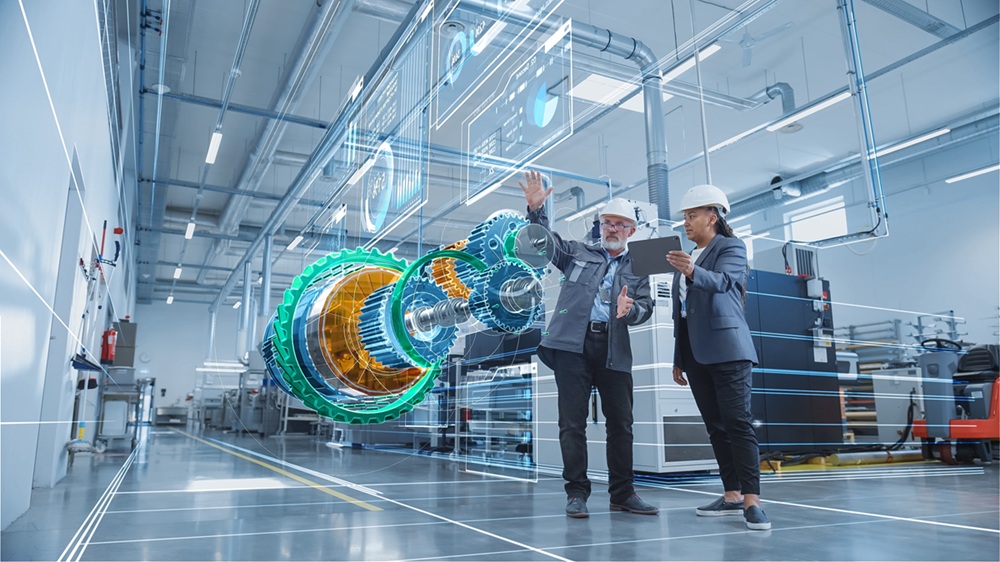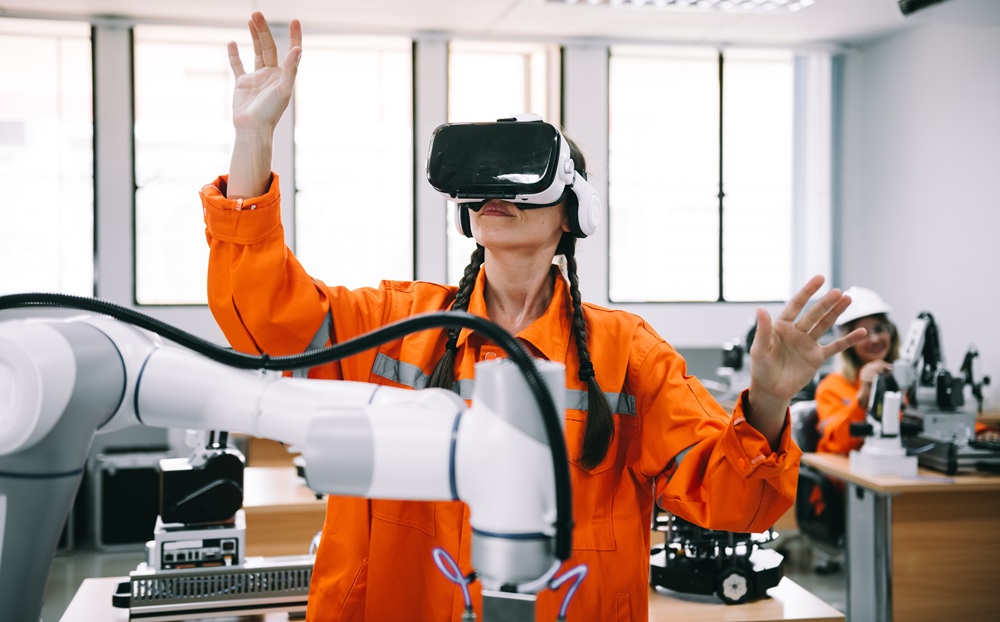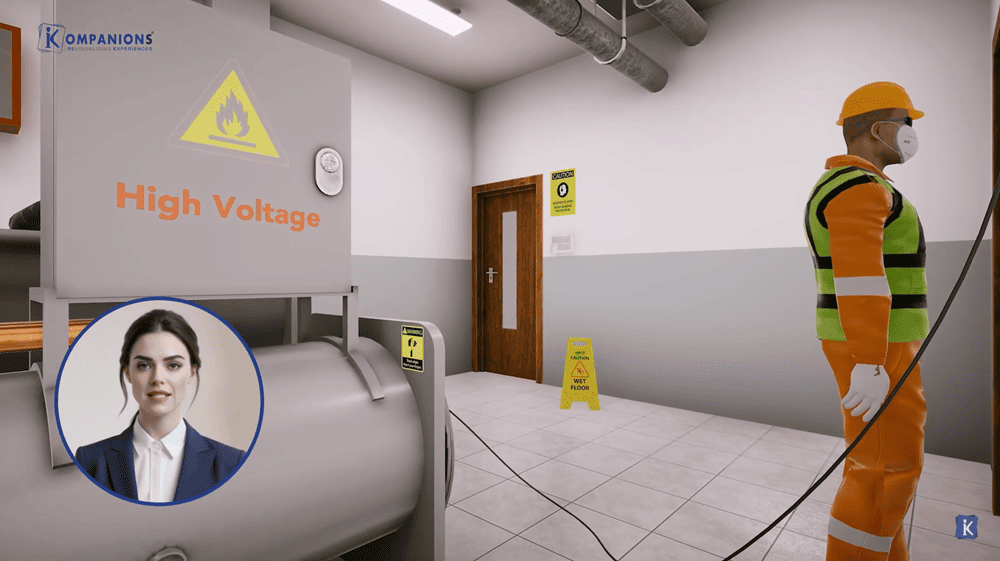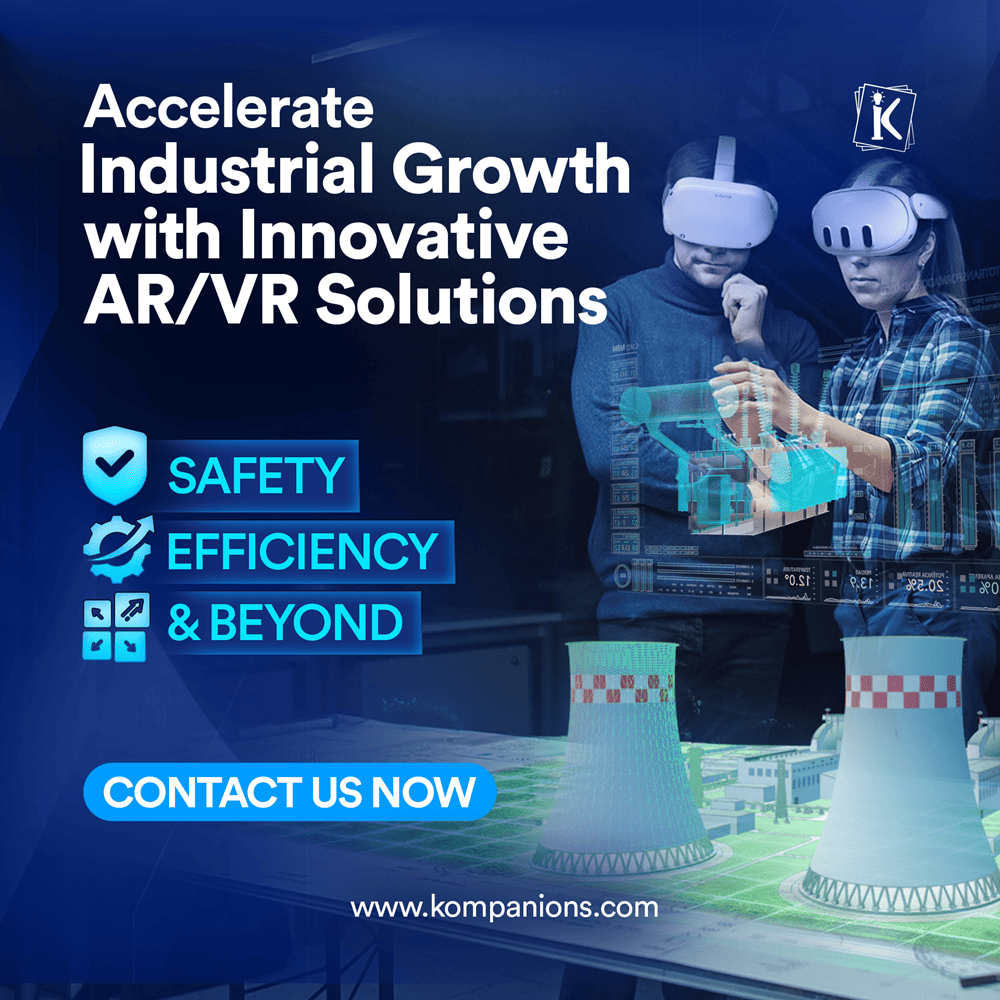It’s time to talk tech. The world is seeing an exponential rise in the manner in which AR is being put behind the wheel. The automotive industry is undergoing a disruption in previously unimaginable ways. From virtual engineering to HUDs, AR is dictating our traveling experience.
- A report published by Grand View Research, AR in automotive is projected to grow from $15.47 billion in 2024 to $122.4 billion by 2030, with a CAGR of 41.2%.
- North America dominates the AR inthe automotive market with a share of 45%, whereas Asia Pacific is identified as the fastest-growing market, attributed to technological advancements and increasing adoption of AR/VR in the automotive sector.
The power of AR can be seen in the success of Land Rover in the UK. Even before the launch of the car, Land Rover achieved 143% of its presale target for the New Discovery Sport model. This was done through AR-enabled virtual showrooms.
Industry Players at the Forefront of AR Adoption
• BMW released its crossover SUV segment completely in the virtual model.
• Tesla’s virtual car showroom is the best example where the customer is put into a futuristic car showroom equipped with all the models they plan to purchase.
• The AR for Car Chase experiment by Nissan to promote its Chase model.
• MG Digital Studio offers a unique visual experience with only digitally projected cars in its showrooms.
• Porsche has reduced the service time shortened the chain of communication, and improved the quality of customer experience through the “Tech Look Live” program.

Contact Us
Benefits of AR in the Automotive Industry
AR is revolutionizing the automotive industry by enhancing design, manufacturing, and customer experiences. From streamlining prototyping to improving driver safety with advanced HUDs, AR offers innovative solutions that boost efficiency and engagement. Discover how AR is transforming the automotive sector and driving the future of mobility.
1. AR-Powered Car Showrooms
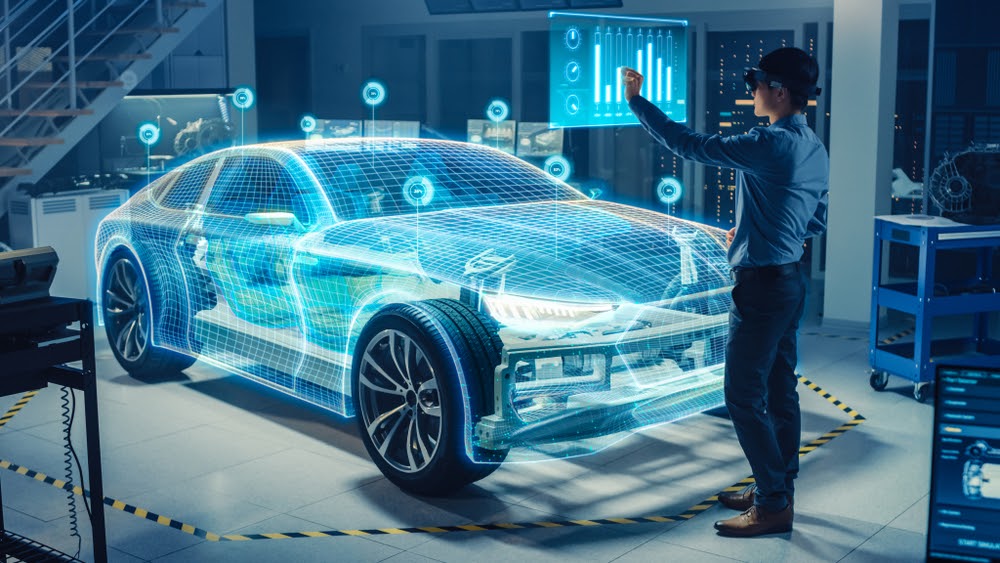
Before the actual purchase, the prospect is given an immersive setting where they can virtually interact with the car and modify various features until they are completely satisfied with the product.
Giving this sense of freedom of choice with little to no commitment greatly lubricates the conversion process.
Virtual showrooms are also advantageous for retailers and manufacturers as well. The total storage cost is reduced. Unpopular colors and specifications can be done away with.
And the issue of value depreciation can be dealt with. Immersive tech and digital reality allow retailers to pinpoint customer needs and better serve them.
2. Test Driving
With virtual test drives enabled through augmented reality cars, the customer can simply put on headgear or sit in a simulator and experience the exact nuances of the physicality of the vehicle.
Related post: Opportunities AR, VR, MR Provides for SMEs
There are certain terrain-specific vehicles, such as Land Rovers or Hummers. The complete sophistication of the machine can be experienced only on certain terrains. AR addresses this as well by bringing the terrain to the customer.
3. Sales
Digital car showrooms are the future of automotive retail. This greatly reduces the rent and gives way to better operational efficiency.
AR assists with after-sales activities as well. An example is Volkswagen’s MARTA or Mobile Augmented Reality Technical Assistance.
MARTA is an AR-powered goggle that allows technicians to get a vision of the car, overlaid with repair information, making sure that human error is reduced to absolute zero.
4. Services
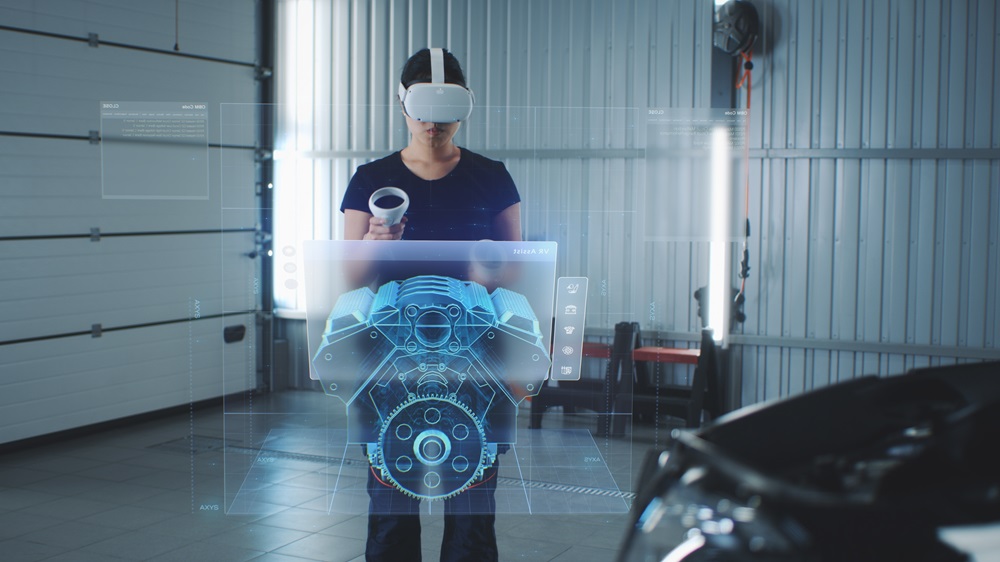
Using augmented reality in automotive, vehicle owners can point a device at their vehicle to understand how to fix minor issues. This can reduce service center visits.
If the issue is a major one, the owner can get to know the exact problem before visiting a service center, thus improving the customer–manufacturer relationship.
Applications of AR in Vehicle Design
AR enhances collaboration, accelerates decision-making, and improves the accuracy of designs by providing real-time visual feedback, which leads to better vehicles with optimized features. Below are some top applications of AR in vehicle design.
1. Virtual Prototyping
AR allows designers to create and view 3D models of vehicles, enabling real-time modifications. This eliminates the need for physical prototypes, saving both time and money while improving design accuracy.
2. Interactive Design Visualization
Engineers and designers can overlay virtual components onto physical models using AR, facilitating better understanding of how different parts fit together. This helps optimize vehicle design before actual production begins.
3. Enhanced Collaboration
AR enables remote collaboration by displaying digital models for multiple stakeholders. This allows teams across different locations to interact with and review designs, improving communication and reducing errors.
4. Ergonomics and User Experience Testing
AR can simulate the vehicle's interior layout, allowing designers to assess user comfort and ergonomics in a virtual space. This helps refine the user experience before physical production starts, ensuring better driver and passenger satisfaction.
Enhancing Automotive Manufacturing Processes with AR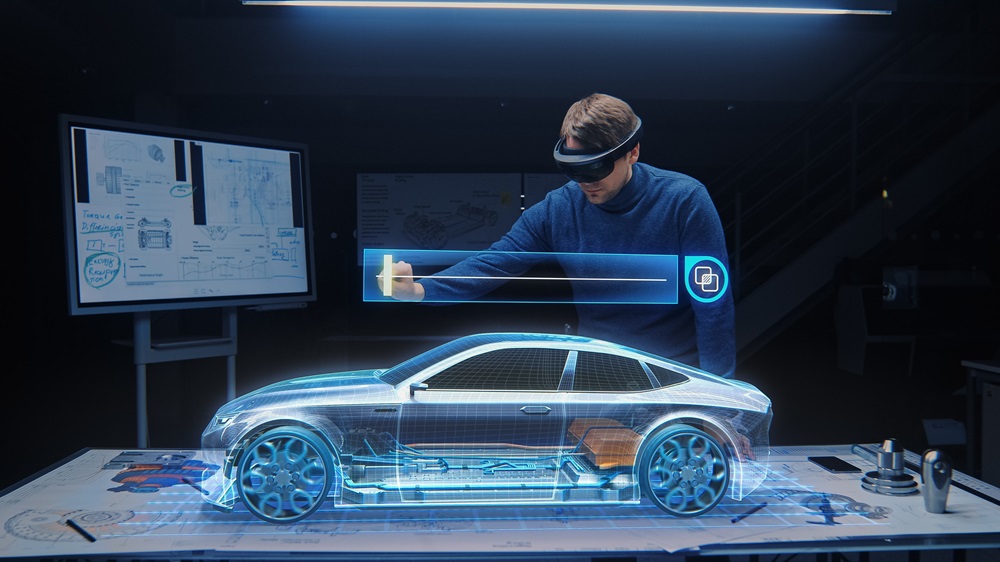
In manufacturing, AR plays a pivotal role in improving efficiency by overlaying real-time data on workers' field of view. This technology assists in assembly line tasks by guiding workers with step-by-step instructions and alerts, reducing errors, and enhancing productivity. Additionally, AR can streamline quality control, ensuring consistent product standards.
Discover how AR is revolutionizing manufacturing, its benefits, use cases, and examples in this detailed blog post on AR in Manufacturing.
Challenges and Future Trends in AR for Automotive
While AR brings immense potential to the automotive industry, challenges such as high implementation costs, limited AR hardware, and resistance to change remain significant.
As AR technology advances, we expect improvements in affordability and ease of use. Future trends will include deeper integration with AI, improved real-time data processing, and more personalized user experiences, making AR an indispensable tool in vehicle design, manufacturing, and maintenance.

 Before the actual purchase, the prospect is given an immersive setting where they can virtually interact with the car and modify various features until they are completely satisfied with the product.
Before the actual purchase, the prospect is given an immersive setting where they can virtually interact with the car and modify various features until they are completely satisfied with the product.


